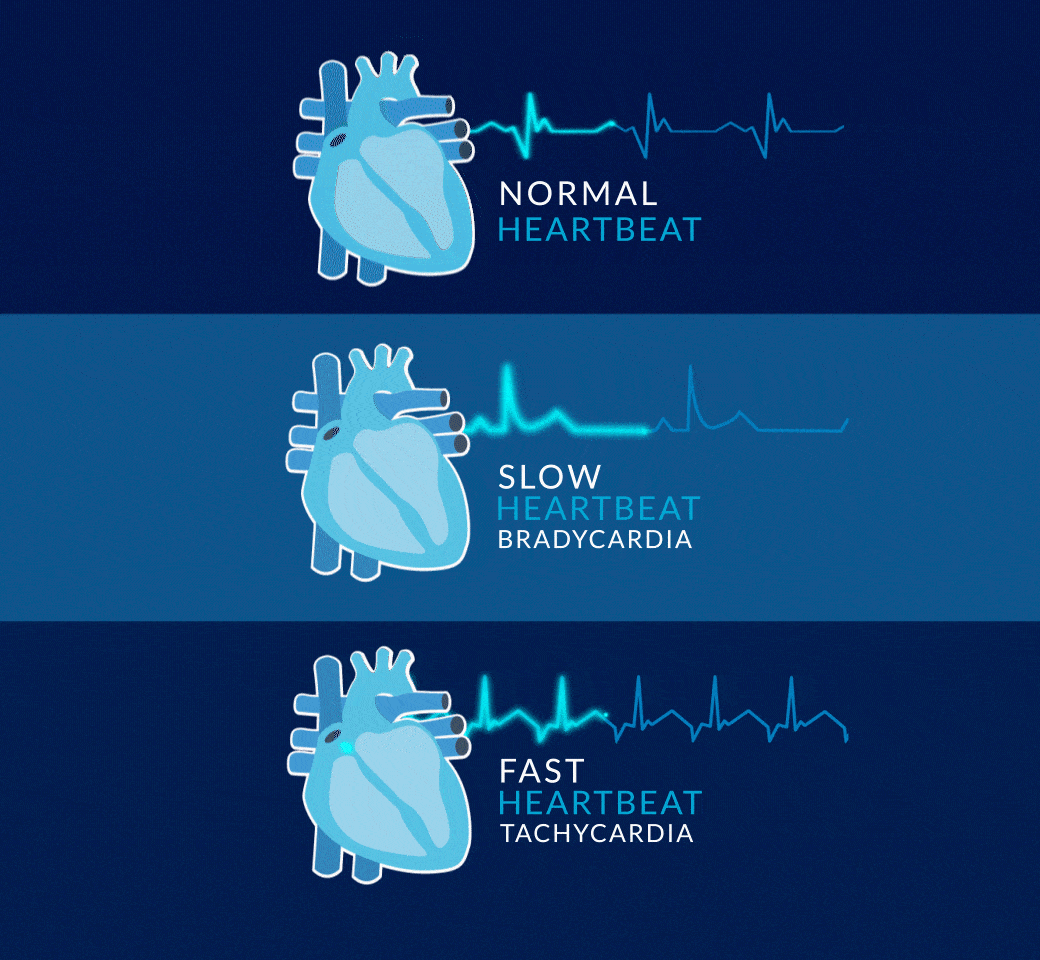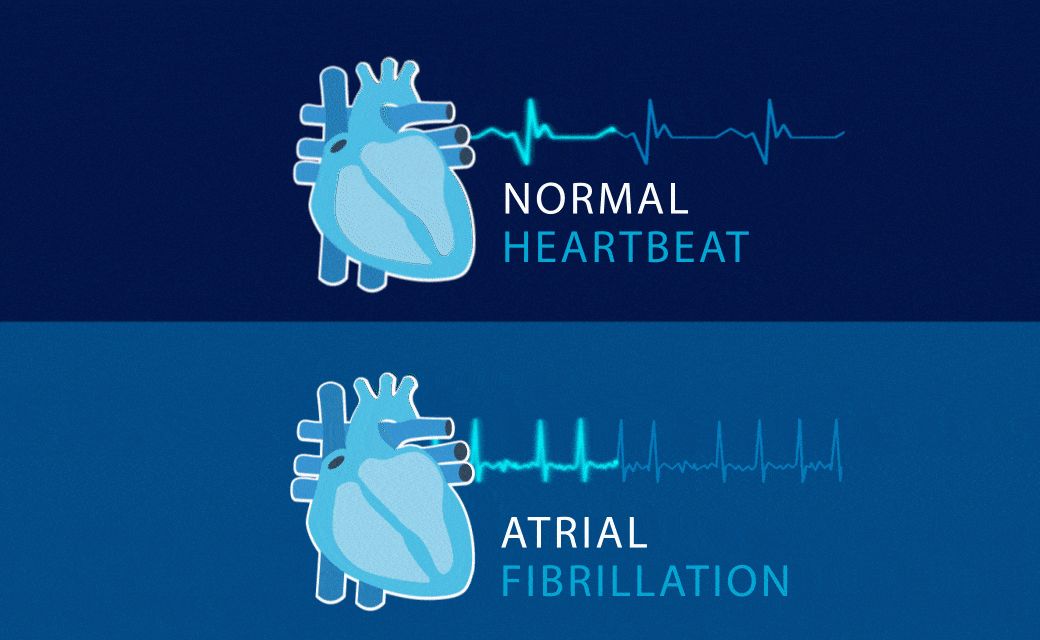WHAT IS AN ARRHYTHMIA


What is an Arrhythmia
An arrhythmia is a heart rate (pulse) or heart rhythm disorder. The heart can beat too slow (bradycardia), too fast (tachycardia), or irregularly.
When discussing with your doctor, you may want to use this document to help guide the conversation
When discussing with your doctor, you can guide the conversation with this document.
When discussing with your doctor, you may want to use this document to help guide the conversation
To consult with your doctor, you can guide the conversation with this document:


BRADYCARDIA
Bradycardia refers to a slow heartbeat: a resting heart rate lower than 60 beats per minute. Although a resting heart rate slower than 60 beats per minute is normal for some people, bradycardia can also cause symptoms which indicate that the brain and other organs might not get enough oxygen.
TACHYCARDIA
Tachycardia refers to a fast heartbeat: a resting heart rate greater than 100 beats per minute. Although a fast heart beat is normal during exercise or as a response to stress or illness, the term tachycardia is used for a faster heart rate due to conditions which are not related to normal physiological stress.
BRADYCARDIA
Bradycardia refers to a slow heartbeat: a resting heart rate lower than 60 beats per minute. Although a resting heart rate slower than 60 beats per minute is normal for some people, bradycardia can also cause symptoms which indicate that the brain and other organs might not get enough oxygen.
TACHYCARDIA
Tachycardia refers to a fast heartbeat: a resting heart rate greater than 100 beats per minute. Although a fast heart beat is normal during exercise or as a response to stress or illness, the term tachycardia is used for a faster heart rate due to conditions which are not related to normal physiological stress.
Atrial fibrillation
It is an irregular heart rate that affects upper chambers of the heart (atria).
It prevents blood from being pumped efficiently to the rest of your body.

Normal heart rhythm
Atrial Fibrillation Rhythm
Atrial fibrillation
It is an irregular heart rate that affects upper chambers of the heart (atria).
It prevents blood from being pumped efficiently to the rest of your body.

Normal heart rhythm
Atrial Fibrillation Rhythm
CARDIOVASCULAR DISEASES ACCOUNT FOR MORE THAN17.9 MILLION DEATHS EVERY YEAR GLOBALLYhttps://www.who.int/health-topics/cardiovascular-diseases#tab=tab_1
When discussing with your doctor, you may want to use this document to help guide the conversation
When discussing with your doctor, you may want to use this document to help guide the conversation
Medtronic
Engineering the extraordinary
UC202117449 EE
Take care of your heartbeat is an educational initiative designed to inform people about heart rhythm disorders. It is brought to you by Medtronic.
Information on this site does not constitute medical advice.
Always consult with your physician about treatment options and if you have any questions or concerns about your health.
Last updated February 2023
Medtronic
Engineering the extraordinary
UC202117449 EE
Last updated February 2023


